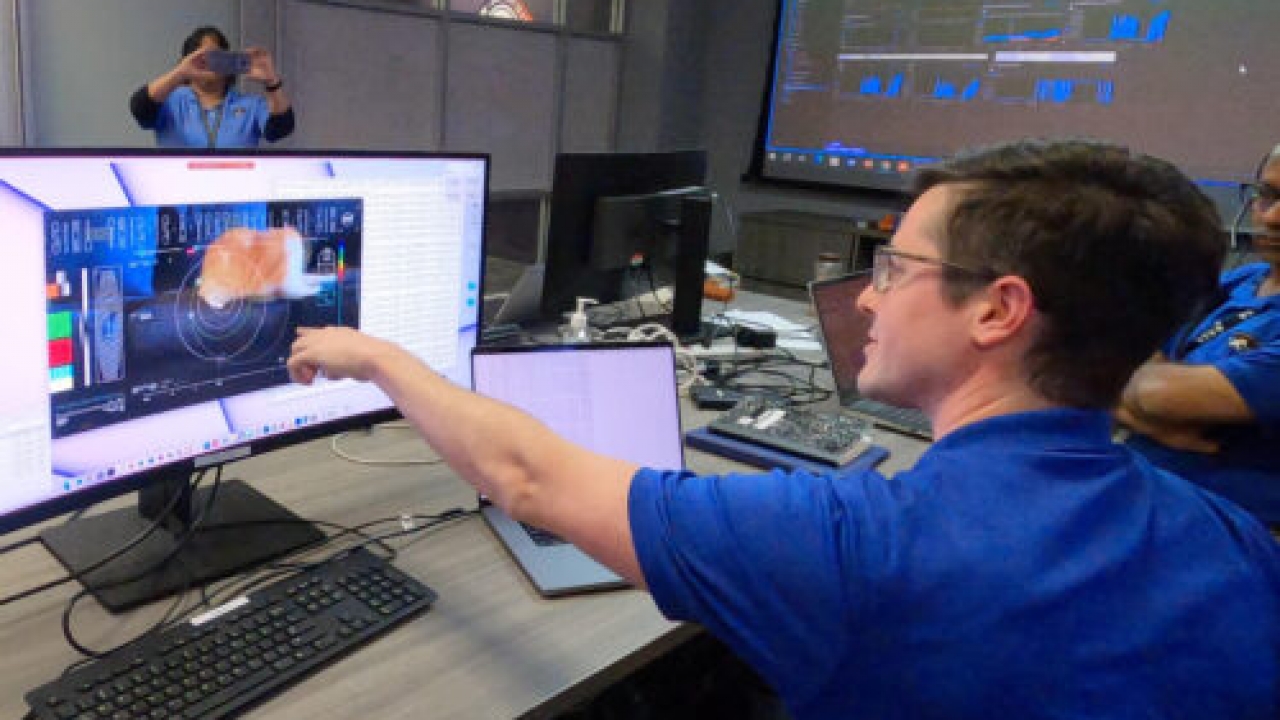Cat named Taters steals the show in first video sent by laser from deep space
A ginger cat named Taters stars in the first video transmitted by laser from deep space, stealing the show as he chases a red laser light.
The 15-second video was beamed to Earth from Nasa’s Psyche spacecraft, 19 million miles (30 million kilometres) away.
It took less than two minutes for the ultra high-definition video to reach Caltech’s Palomar Observatory, sent at the test system’s maximum rate of 267 megabits per second.
The video was loaded into Psyche’s laser communication experiment before the spacecraft blasted off to a rare metal asteroid in October. The mission team at Nasa’s Jet Propulsion Laboratory in Pasadena, California, decided to feature an employee’s three-year-old pet.
The video was streamed to Earth on December 11 and released by Nasa this week.
Despite the vast distance, the test relayed the video faster than most broadband internet connections on Earth, said the project’s Ryan Rogalin.
Nasa wants to improve communications from deep space, especially as astronauts gear up to return to the moon with an eye towards Mars. The laser demo is meant to transmit data at rates up to 100 times greater than the radio systems currently used by spacecraft far from Earth.
More test transmissions are planned as Psyche heads toward the main asteroid belt between Mars and Jupiter.
NASA uses laser to send a cat video from deep space back to Earth
The video traveled from 19 million miles away back to Earth, which is about 80 times farther away than the moon is from our planet.
NASA's Jet Propulsion Laboratory
Dec 19, 2023
One small step for man, one giant pounce for feline-kind.
A cat named Taters just made history. NASA recently streamed a high-definition video of Taters from outer space back to Earth. But here is the most amazing part: They were able to do so from 19 million miles away. That is about 80 times farther away than the moon is from the Earth!
NASA shared the news on their social media, including on X:
“Increasing our bandwidth is essential to achieving our future exploration and science goals, and we look forward to the continued advancement of this technology and the transformation of how we communicate during future interplanetary missions,” explained NASA Deputy Administrator Pam Melroy in a press release.
You can watch the video that NASA launched into outer space on YouTube. Fittingly, Taters is playing with a laser pointer as laser technology transports his furry perfection across millions of miles.
The 15-second video of Taters was launched from outer space to Caltech’s Palomar Observatory. It only took 101 seconds for the video signal to reach Earth and the Hale Telescope. Then, the video was downloaded and then sent to NASA’s Jet Propulsion Laboratory in Southern California for its live demo. Talk about a quick connection!
“Despite transmitting from millions of miles away, it was able to send the video faster than most broadband internet connections,” said NASA’s Jet Propulsion Laboratory electronics lead Ryan Rogalin.
NASA’s Psyche mission is far from over. The spacecraft is headed to Psyche, a metal-rich asteroid that orbits the sun in between Mars and Jupiter. NASA expects Psyche to arrive at its namesake in May 2026.
This story was originally published by Bridget Sharkey at Simplemost.com.

No comments:
Post a Comment